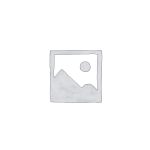Saffron
Saffron Export: A Treasure of Iranian Taste and Color in Global Markets
Saffron, scientifically known as Crocus sativus, is one of the most precious and popular spices in the world, cultivated and used in Iran for centuries. This product, with its unique taste and fragrance, is widely used not only in cooking but also in the pharmaceutical and cosmetic industries. Iran, as the largest producer of saffron in the world, has great potential for exporting this golden treasure to global markets. The export of Iranian saffron presents a unique opportunity to introduce this high-quality and natural product to the world.
Quality and characteristics of Iranian saffron
Iran, due to its unique climatic conditions, fertile lands, and the use of both traditional and modern methods in saffron cultivation and harvesting, has been able to produce one of the best types of saffron. Iranian saffron is globally recognized for its golden yellow color, unique fragrance, and distinct taste. This product is harvested from saffron flowers and, after drying, is sold as thin and delicate threads. Iranian saffron is specifically known as “original” or “pushali” saffron and has many admirers in global markets due to its high quality and purity.
Advantages of Exporting Iranian Saffron
- High Quality: Iranian saffron, due to the unique climatic conditions and suitable soil in various regions of the country, has a high quality that sets it apart from other competitors. Iranian saffron has a very strong color and a pleasant fragrance, which is particularly important in the food and pharmaceutical industries.
- Global Consumption: Saffron is used not only in Iran but also in many countries around the world, especially in Indian, Spanish, Italian, and Middle Eastern cuisines. This product is used as a luxury spice in many five-star restaurants and hotels. Additionally, due to its therapeutic properties, saffron also has high demand in the pharmaceutical and cosmetic industries.
- Long Shelf Life and Proper Packaging: Due to its unique characteristics, saffron can have a long shelf life if stored properly. Resistant and hygienic packaging protects the product from environmental damage and moisture, preserving its quality. Attractive and modern packaging can help attract consumers in international markets.
- Medicinal and Health Benefits: In addition to its unique taste and fragrance, saffron has many therapeutic properties. It is known as a natural relaxant, immune system booster, antidepressant, and disinfectant. These properties have increased the demand for Iranian saffron in global markets.
Export markets and new opportunities
Global markets, especially in the Middle East, Europe, the United States, and East Asia, have a high demand for Iranian saffron. In particular, in European and American countries, consumers are looking for high-quality, natural products, and Iranian saffron easily meets this demand. Additionally, in East Asian countries, especially India and China, Iranian saffron is highly popular for use in cooking and traditional medicine.
Challenges and solutions
Exporting Iranian saffron may face challenges such as competition with other global producers, transportation issues, and import restrictions in destination countries. To overcome these challenges, Iranian producers can focus on improving production processes, enhancing packaging quality, and using digital marketing strategies. Additionally, the use of modern technologies for saffron cultivation and harvesting can help improve quality and increase productivity.
Conclusion
The export of Iranian saffron, due to its high quality, medicinal properties, and vast global markets, presents a golden opportunity for boosting the country’s economy and introducing this product as one of Iran’s cultural symbols to the world. Iranian saffron, a treasure of taste, color, and fragrance for the world.



